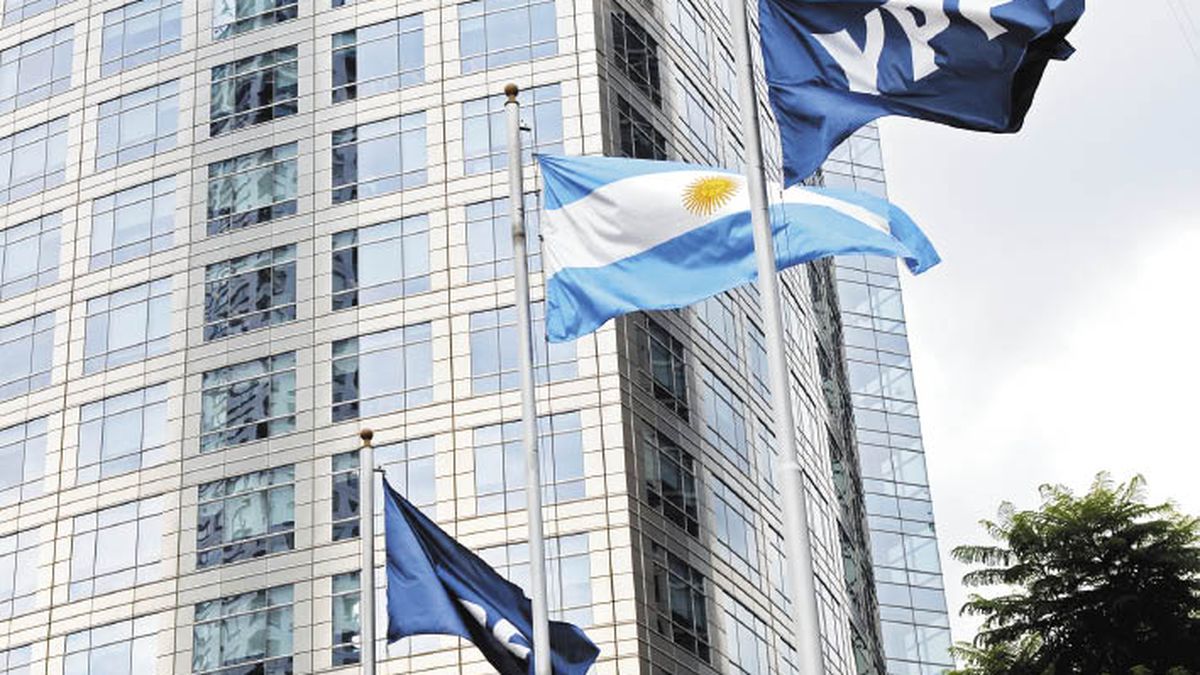Last week YPF announced that it reached an agreement for the Maxus case in the United States, which will grant a full release and acquittal of the claims that the Liquidation Trust presented at the time for up to US$14,000 million. YPF and Repsol undertake to pay the Trust US$287.5 million each, for a total of US$575 million, without either of them admitting any responsibility.
Find out more – I followed the price of the blue dollar, official, CCL and MEP in Argentina
The president of YPF, Pablo González, highlighted the resolution of the lawsuit for the contamination of the Passaic River, by the company Maxus, while saying that still There are still two instances of appeal to the ruling in the United States Court against Argentina for the expropriation of YPF. “There remain two appeal circuits in which the New York judge is ruling on a bankruptcy that occurred in Spain of an Argentine flag company applying Argentine law; that is what Axel (Kicillof) called legal absurdity at the time, there remains a lot to discuss”, González told AM 750 radio.
In this sense, he considered that “those who celebrated the ruling against the national State, the truth is unfortunate,” because he stressed that this ruling “is from a vulture fund.” Failure “It frees YPF from responsibility, something that (the fund) Burford didn’t really want because they want to collect from Vaca Muerta, because Vaca Muerta is growing at exponential levels and that’s where the interests are,” stressed the head of YPF, who remarked that “the ruling exempted YPF from responsibility, with which he would be removing another ballast that had been chasing him”.
The national oil company comes from registering a record level of investment in 2022, which exceeded that of 2021 by 52%, and “improved in all indicators”, from its production to its profits, through the reduction of debt and the improvement in the price of its shares, according to a private report. In this way, “the data analyzed from YPF allow us to forcefully deny the ideological statement that the State is inefficient in managing resources,” states the analysis carried out by the Center for Political Economy (CEPA).
Beyond the jump of 10.2% of YPF this Monday, the rest of the Argentine papers also registered solid advances in New York: BBVA bank gained 5.6%%; Transportadora de Gas del Norte, 5.4%; Supervielle, 3.6%; and Bioceres, 3.4%.
In that framework, the Buenos Aires stock market closed on the rise and the S&P Merval index climbed 1.5%, to 256,747.73 points, encouraged by the actions of the state oil company.
$11,735 million in equities were negotiated, highlighting the performance of YPF (+5.7%); Central Port (+5.5%); Transener (+5.4%); Transportadora de Gas del Norte (+5.4%); and Edenor (+4%).
The market operated attentive to the agricultural dollar debutwhich has not yet registered any liquidation, with the producers surely attentive to the fine print of the mechanism (for example, the regulation of article 17 of decree 194 that mentions that the pesos produced must be credited in “dollar-linked” accounts), they commented from SBS.
It is worth noting that on the first day of the “soybean dollar 1” there were no liquidations either, while on the first day of the soybean dollar 2, US$292 million were liquidated. What can be caused this? “We believe that the typical administrative implementation processes could be the reason behind it, and that the liquidations will begin soon,” they said from PPI.
The stock market once again had technical problems during the day: “After it was affected at the start of the session, the service was restored at 11:30,” BYMA said. “Work continues on the resolution of low-impact irregularities for the general public,” he added.
for his partWall Street kicked off the week by digesting the March employment data released on Good Friday: while general employment showed creation of 236,000 jobs versus 230,000 expected (down from 326,000 in February), private employment showed a creation of only 189,000 jobs versus 218,000 expected (from 266,000 the previous month).
US stock indices recovered from heavy losses to close mixed on Monday, as investors braced for an eventful week with inflation data and bank earnings. Mega-cap stocks pressured the high-tech Nasdaq, while industrials helped boost the Dow Jones Industrial Average.
So the index The S&P 500 gained 3.64 points, or 0.1%, to 4,108.66; the Nasdaq lost 6.10 points, or 0.05%, to settle at 12,081.86; and the Dow Jones Industrial Average rose 98.43 points, or 0.3%, to 33,583.72 units.
For its part, the US 10-year bond rate rose 2 points to 3.41%, while WTI oil lost 1% to u$s79.85.
Bonds and country risk
In the fixed income segment, on the other hand, the Argentine dollar bonds closed with increases of up to more than 4% -after a downward start- led by Global 2046 (+4.2%); Global 2029 (+1.8%); and Bonar 2030 (+0.9%). It was after the significant falls last week after the country lost a lawsuit in the London court over payments that four hedge funds sued for manipulation of the Gross Domestic Product (GDP) data in 2013 , linked to the coupons receivable.
Thus, the Argentine country risk, which is measured by the JP. Morgan, gave up 22 units, at 2,429 basis points.
For their part, dollar-linked peso bonds operated with good volume, but they fell 0.3% in the short tranche, while the TV24 rose 0.3%. Conversely, the duals traded firm on the short leg, which gained 0.4%, while the longer leg fell 0.3%.
Regarding the CER segment, the Leceres ended with average increases of 0.5%, while the Bonceres gained 0.6%, at the beginning of a week in which the inflation data for March will be known (next Friday), which will probably is around 7%, according to private estimates.
Source: Ambito
I am a 24-year-old writer and journalist who has been working in the news industry for the past two years. I write primarily about market news, so if you’re looking for insights into what’s going on in the stock market or economic indicators, you’ve come to the right place. I also dabble in writing articles on lifestyle trends and pop culture news.




